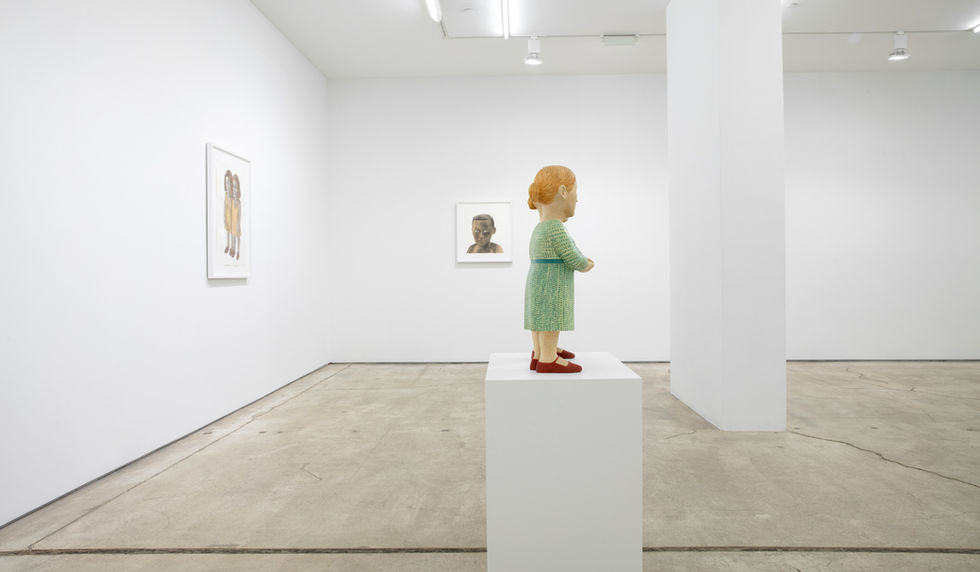Doubles
2022
Jack Shainman New York
Sculptures

Statement
Schreuders has consistently engaged with ideas of coupledom in her practice, exploring familial, domestic, and intimate relationships through her figurative painted wood sculptures and works on paper, which often reveal our private, domestic worlds as part of the public domain. In the past, Schreuders’s fascination with couples, pairs, and conjoined figures has taken form in figures of motherhood, siblings, and sexual relationships; however, here, Schreuders has turned her focus to doubling, repeating the same figure as a haunting reflection of itself.
The four sculptures in this exhibition are spectral doubled forms that imagine and make visible our isolation by placing oneself in one’s own company. The enforced isolation of the past two years, though experienced as private and personal, was universal. Particularly, as an artist, Schreuders saw a parallel with her work in the studio as a solitary activity. Paired with the wooden figures are four large works on paper, each representing one of the sculptures. Installed in the same space, they offer a second doubling of the subject, another echo of repetition.
Schreuders’s sculpture is rooted in both African and European traditions, and she derives her inspiration from a number of sources including medieval church figures, West African carving and Spanish portraiture. Accomplice (2021) is inspired by a sculpture, The Visitation, (c. 1310-1320, Germany) in the collection of the Metropolitan Museum of Art, New York. The gestures in this work—the Virgin Mary’s hand tenderly placed on her relative Elizabeth’s shoulder, who holds her hand to her chest—are repeated in Schreuders’s figures, which are a reflection of each other connected by these same mirrored gestures. In Intruder (2021), the figure hovering above and the reposed woman are held in balance upon their skirts and conjoined feet. In addition to the sculptures, a series of smaller works on paper present Schreuders’s other studies and source imagery, such as The Visitation and drawings of her earlier sculptures. These drawings are a critical part of her process, living as a record of her work and practice.
The titles of the sculptures are drawn from chapter headings in the memoir Hope Against Hope by Nadezhda Mandelstam, the wife of the great Russian poet Osip Mandelstam who was arrested and died during Stalin’s Great Purge of 1937-38 in the Soviet Union. As such, Schreuders’s adopted titles evoke a sense of paranoia and distrust that is felt in the sculptures, whose figures are both alone and observed. The viewer is left with a sense of unease when confronted with these works—there is a type of madness in repetition. In recent years, Schreuders has recognized the increased polarization and extremism that has been exacerbated by the pandemic and our isolation, when one only looks inwards or at one’s own kind. In her work as an artist, Schreuders sees this in stark contrast to her time as a student in newly post-apartheid South Africa, when she felt encouraged to study other traditions and cultural production and raises the question of how to bridge the racial gap and continue in this current landscape.
Work on paper



















































